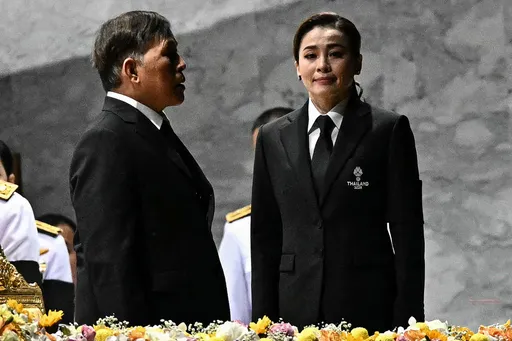Last week's BRICS summit drew more media attention than ever before. The significance of the meeting stemmed not only from the fact that Russian President Vladimir Putin could attend only virtually, fearing arrest on a warrant issued by the International Criminal Court, but also from the discussions that were had surrounding de-dollarisation and BRICS expansion. What’s more — from a strategic point of view — is that these recent discussions indicate a change in orientation of the global economic and financial order.
Two important cues can now be read between the lines: First, the global economic and financial order is moving towards a new multilateralism. Second, a new economic development narrative is gaining ground. And the rise and expansion of BRICS accelerates the end of the dominance of Western powers.
Rise of multi-alignment
The new multilateral economic and financial order that is emerging does not consist of just two countries and their committed satellites as it did in the past. In this new order, there is no overt Cold War between two opposing nations — in this case, China and the United States — and countries are no longer obliged to take sides or to reject either country in favour of the other. Instead, this multilateral world offers economic multi-alignment opportunities for everyone involved.
Multi-alignment is different from non-alignment. The non-alignment movement is a product of the Cold War era, when nations considered that independence was to be gained in refusing to side with either — Western or Eastern — bloc. Neutrality made sense then because non-alignment allowed newly independent states to distance themselves from the politics of the axes and avoid being pulled into an escalating spiral of tension between the two adversaries.
Today’s dynamics are different. First, the world is not currently divided into two camps. Moreover, the world today is not experiencing the kind of existential struggles experienced during the Cold War. Today, many middle-power states have strengthened their foreign policy institutions and gained economic resilience since gaining their independence after World War II and the Cold War to avoid external pressure without isolating themselves. Instead of having to choose between alignment and non-alignment, governments around the world can now seek to engage with various powers and build as many parallel relationships as possible, allowing them to achieve common objectives such as security and economic prosperity. That’s why many nations have good relations with Russia, China and the US.
Balancingact
Last week’s 15th BRICS Summit heralded and welcomed the advent of this new order — one that consists of multi-aligned states. BRICS members shared their concerns about the existing global financial and payment systems and the need for alternatives. They also made clear their desire to facilitate trade and investment flows using local currencies in order to avoid, at least partially, total dependence on the US dollar.
However, the BRICS parties still continue to foster their economic relations with the West. Brazil, for example, is committed to finalising the EU-MERCOSUR free trade agreement. Similarly, India’s Prime Minister Modi recently visited the US to improve economic relations between the two nations. Even China aims to maintain a balanced economic relationship with the US. Moreover, many BRICS nations are party to groupings with Western powers. For instance, India is part of the Quadrilateral Security Dialogue with Australia and the US.
Arguably, such steps taken by these countries result from their realisation that multi-alignment is ultimately more beneficial to them — and that Western economic and financial paradigms aren’t going anywhere anytime soon.
No political conditions attached
The current economic development model the world adheres to cannot be easily supplanted. With its numerous institutions, including the IMF and the World Bank, this Western paradigm has become deeply embedded in the global economic and financial system since World War II.
The political conditions attached to Western loans are what give the West’s economic development paradigm its power. However, many borrowers from the developing world see these conditions as an additional burden. Worse, most see them as disrespecting their sovereignty and as a continuation of Western colonial ambitions.
That's why many nations oppose the Western economic development paradigm and are, instead, developing their own paradigm, consisting of loans with no political strings attached. As a core BRICS member, China leads the no-political-strings-attached club, and as a bloc, BRICS is helping this new development paradigm gain ground.
At last week's summit, Dilma Rousseff, the president of the BRICS New Development Bank, reiterated the financial institution’s position on conditions attached to loans. "Often, a loan is given upon the condition that certain policies are carried out. We don't do that. We respect the policies of each country," she said. This vision and approach would seem to indicate that BRICS’s support for the new development paradigm is ongoing.
Why does BRICS matter?
The BRICS partnership comprises five emerging economies: Brazil, Russia, India, China and South Africa. These economies are playing an increasingly important role in the global economic order, including via their advancements in tech, innovation and manufacturing. The BRICS partners account for more than 42 percent of the world's population, almost a quarter of the worldwide economy and around 20 percent of international trade.
The partnership also aims to promote the Global South's interests and create a more inclusive world order. The significance of the BRICS bloc in the global economy and its alternative discourse, away from Western influences, gives credence to its signals and to the course of action it is set to take to implement a new international economic and financial order.
Given the traction BRICS and its alternative paradigm are gaining, nations the world over would do well to closely monitor the bloc and its evolution from this point onwards — for the “alternative” may overtake the current paradigm to become the default sooner than we know it.
























